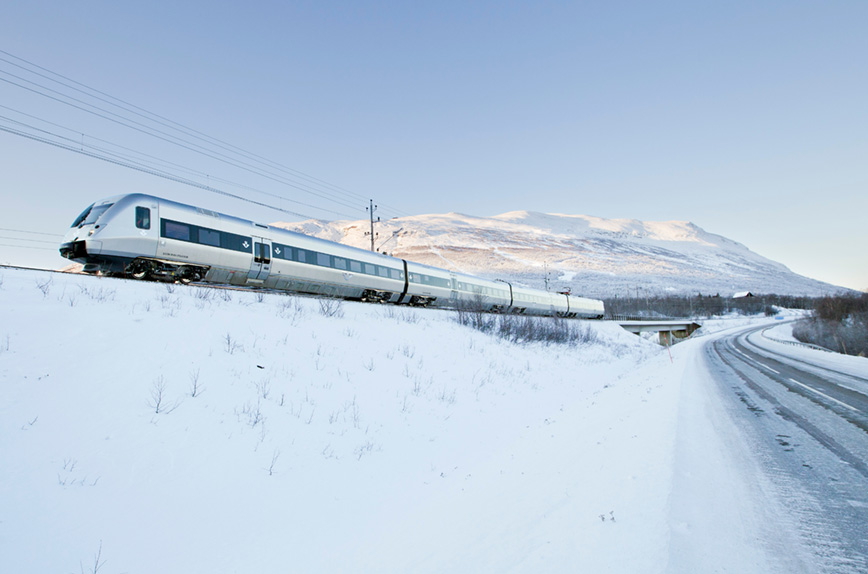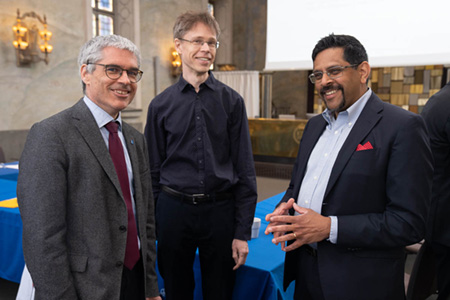KTH and Alstom in joint effort for a sustainable European railway system

The EU is focusing heavily on sustainable travel. With Europe’s Rail Joint Undertaking (EU-Rail), the vision is to introduce a high-capacity, highly reliable integrated European railway system in order to reduce climate impact and meet increased transportation needs. KTH has recently begun a strategic partnership with mobility solutions provider Alstom, and alongside the Swedish Transport Administration they are bringing research funding and innovation to the EU initiative.
The goal of EU-Rail is to increase the use of railways to transport passengers and freight, and to reduce greenhouse gas emissions. In partnership with the Swedish Transport Administration and Alstom, KTH is contributing solutions and boosting the geographical and transport-related conditions and regulations in the Swedish railway system.
“The major problems with Europe’s rail transport primarily relate to a lack of capacity due to underinvestment in the infrastructure. There are also different technical systems and regulations in the various countries. This could mean that a train approved in Sweden is not allowed to run in Denmark,” says Sebastian Stichel , Professor in Rail Vehicle Dynamics at KTH and a former employee of Alstom (then Bombardier).
There are currently six flagship projects in EU-Rail, with grants of up to SEK 500 million and up to around 50 partners per project. The projects began around the new year, will run for four years, and relate to everything from innovation of signalling systems to allow more frequent services, to finding more eco-friendly alternatives to diesel-powered trains, such as battery- or hydrogen-powered trains. KTH is taking part in all six projects, including the one being headed up by Alstom which relates to environmental issues and energy consumption.
The KTH–Alstom partnership
“It’s important to move transport to the railway to reduce climate impact. We want to contribute innovation so that trains are more eco-friendly, and also make it cheaper and easier to travel by train,” says Sebastian Stichel.

Four KTH schools are taking part ( Architecture and the Built Environment , Electrical Engineering and Computer Science, Engineering Sciences , Industrial Engineering and Management) and the grants focus on everything from digitalisation solutions, techno-economic studies, driverless trains and improved safety at level crossings, to new mechanical solutions to reduce costs and weight for rolling stock.
Driverless trains is one particular area where KTH is contributing a lot of research. It is a prioritised area which, in combination with effective signalling systems, will enable more frequent train services with greater capacity.
Since May 2022, KTH has had a strategic partnership with Alstom, the biggest rolling stock manufacturer on the Swedish railway market. The partnership involves close collaboration in order to secure skills in the sector, as well as development-oriented research that is of benefit to society.
Collaboration on Green Train project
Collaboration on the EU-Rail projects is pivotal, but KTH has been working with Alstom in Sweden for a long time. For instance they worked together on the Gröna Tåget/Green Train project, with KTH helping to develop a new type of motor for electric trains. The motors are now in use in Alstom’s trains.
“We enjoy a hugely beneficial interchange. Alstom have a lot of influence in the rail industry, and if they’re doing well there’s a greater chance that students will want to study railway engineering here at KTH. Our partnership will also bolster KTH’s transport research, and bring a Swedish perspective and Swedish technology to EU-Rail,” says Stichel.
Fredric Bonnevier, Head of DC Performance at Alstom Sweden, agrees and stresses how important the research partnership with KTH is to Alstom.
“It enables us to collaborate on joint projects, not only in national societal development but also internationally through technological development and issues related to railways, rolling stock and signalling systems. The partnership is also of strategic importance to our operation with regard to skills supply, skills development and research,” he says.
Text: Nicky Rosenberg

